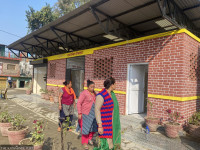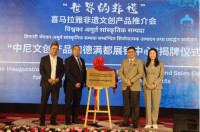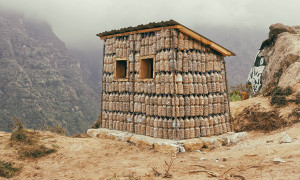Money
Tale of two ambitious highways
It has been five months since potential bidders abandoned the Kathmandu-Tarai Fast Track Road project, but the government has not been able to finalise its development and financial modality
Ramesh Shrestha
With international bidders shying away, the government is now planning to build the Fast Track project on its own. However, it will be a two-lane road instead of the originally planned four-lane. With resources hard to come, Nepal Purbhadhar Bikas Com-pany Limited (NPBCL), developer of the tunnel highway, recently scrapped the ceiling of Rs 1 million, allowing institutional investors to put in the amount they wish.
The Fast Track is estimated to cost Rs 100 billion, while Tunnel Highway requires an estimated Rs 35 billion.
The plan to link Tarai with the Kathmandu valley is not new. Birendra Bahadur Deuja, former secretary, says he had in 1991 pushed for a study to develop a high-class road connecting the Capital with Tarai via Hetauda. “Even after two decades, we are still struggling to get what we want,” says Deuja, who served as Director General at the Department of Roads (DoR) in 1991.
It’s 2014 now, and the government is still undecided about the development and financing mechanism for the Fast Track. “The problem is the government is not showing any seriousness to take off the project,” adds Deuja. “The leaders and bureaucrats need to be serious about these types of projects which can bring significant development in the country.”
As there is only the East-West Highway that passes through the Tarai there is an urgent need for an express highway. The only alternative road that connects the valley with Hetauda is the Tribhuvan Highway via Kulekhani. It offers a shorter 91-km link. But the narrower alignment and basic standard of the road only allows access to local traffic and jeeps.
Similarly, the length of the existing road from Pathlaiya-Kathmandu is more than 250 km and takes 5-8 hours depending on the vehicle type.
Against this backdrop, the government had prioritised establishing a direct high-speed link between Kathmandu and other major cities linking markets in Nepal and India.
In the last five years, plans to build roads linking the southern part of the country have seen progress in terms of preliminary work. But nothing has moved ahead besides paper work to attract developers for the Fast Track road under the build-own-operate and transfer (BOOT) modality.
Tulsi Prasad Sitaula, secretary at the Ministry of Physical Infrastru-cture and Transport, said the rejection to bid for the project by shortlisted companies shows the project under BOOT is not feasible. He said the government has options like developing it on its own and involving donors.
Even as taking roads to Tarai via Hetauda is one of the old plans, the Fast Track was initiated a decade ago as the shortest route to Tarai, which also compliments the planned Second International Airport in Nijgadh. A report has shown the airport is not feasible without the Fast Track road.
Since both the projects require big investment, it has been difficult to attract investors. “Fast Track is currently under consideration of the National Planning Commission,” said Sitaula, adding there is a possibility of developing a two-lane road initially, by allocating a certain budget annually.
Deuja, however, said since it has already been too late, the government should not make a mistake by narrowing it into a two-lane road, the option the government is currently considering.
He said it will be a good idea to offer viability gap funding of up to 40 percent by the government to both the projects to encourage investors and make them feel risk-free.
Earlier, even as the government assured to provide up to 25 percent viability gap for the Fast Track project, no investors applied for the project. Viability gap funding means the government funds infrastructure projects undertaken through public/private partnerships in the form of grant to make them commercially viable.
NPBCL Chairman Kush Kumar Joshi said they would give prime focus on using local expertise and resources for the Tunnel Highway. “If it really becomes hard, we will also bring ‘bulk investors’ from out of the country,” he said.




 11.12°C Kathmandu
11.12°C Kathmandu














